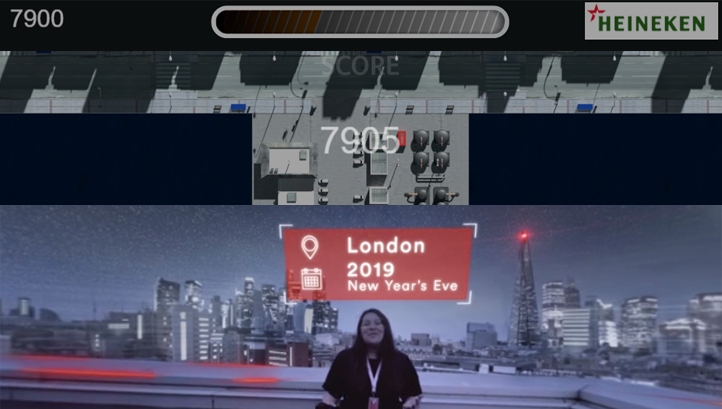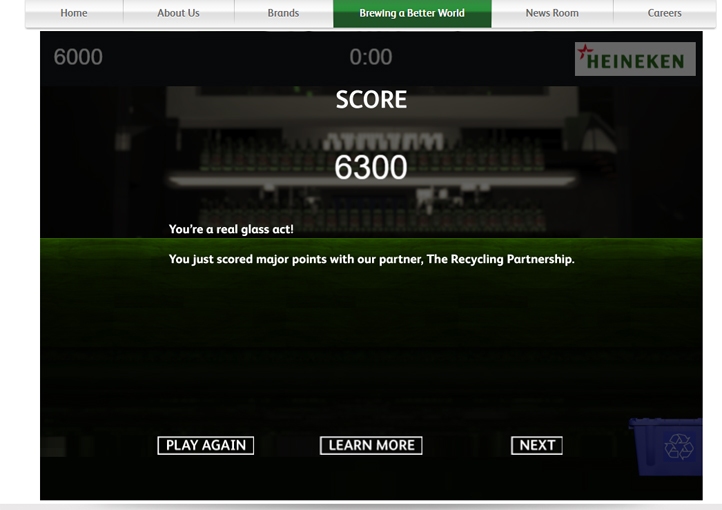As investors, campaign groups and consumers continue to pile pressure on companies to accelerate progress towards ambitious climate goals, some of the stalwarts of sustainability reporting are beginning to look beyond traditional methods of disclosure to drive stakeholder engagement with their CSR reports.

The role and importance of CSR reporting has evolved hand-in-hand with the increasing prominence of ‘sustainability’ in a company’s ethos. Numerous businesses now wax lyrical as to how sustainability is “at the heart of the company”, but the proof of this message is too often lost in the umpteen pages of sustainability reports.
For some, CSR has become something of a ‘tick-the-box’ activity that informs consumers what is being done to mitigate climate threats and reduce key footprints. But for the organisations that have been leading the way on the sustainability agenda for quite some time, there has become a growing need to move towards a ‘show-not-tell’ model that fully engages consumers through the likes of digital innovation and gamification.
Two companies that are now doing exactly that are Virgin Media and Heineken USA – both of which have unveiled innovative approaches to CSR reporting in recent weeks.
Heineken USA’s gamification approach
While it makes sense for Virgin Media – which operates within a digital landscape – to utilise technology in its non-financial reporting, Heineken USA’s venture into gamification is a notably bold step for a beer company that is engaging with ‘the man in the pub’.
The Dutch brewer has taken key messages and milestones from its US operations and displayed them in a “more engaging form”, which requires users to navigate a variety of games and levels in order to uncover the progress that Heineken USA has made in key environmental areas.

Heineken USA’s head of corporate social responsibility for the US Dayna Adelman says the new model is reaching key stakeholders and consumers to a point “beyond the company’s expectations”.
“Our first thought was that are we were creating something that would appeal to children, and that’s not our intent here,” Adelman told edie. “Actually, if you look at the statistics behind gaming, the average gamer – and this is shocking for me – is aged in their late 20s to early 30s.
“It’s actually a method and a trend that’s hitting the mid-millennial generation – which is such a core target of ours. That’s why we decided to proceed with this message, because it was made for those who we really wanted to see it.
“It really got us thinking about how we do something to draw the attention of our stakeholders – how can we create something that is actually going to stick, and that people are actually going to engage with, instead of reading the cover notes and tossing it aside.”
Heineken USA’s new gamification model isn’t a complete leap into the dark, but rather a systematic approach to CSR reporting in an effort to appeal to what others would call “digital natives”. The firm has already tried to rejuvenate the marketing aspect of its CSR approach. Earlier this year, for example, Heineken USA enlisted the help of Kevin ‘Blaxtar’ de Randamie, a Detroit-based musician who created a rap video to accompany the 2015 instalment of the company’s sustainability report.
Adelman believes that the rap video (below), which has now clocked up more than 12,000 views on YouTube, was “just so Heineken”, and that it had managed to get consumers and stakeholders alike to talk about the sustainability report.
The fledgling success of the rap video gave Heineken USA the confidence to move ahead with its gamification-based approach, which is currently only applicable to US data. While there was an element of “fear” among Heineken USA’s sustainability team surrounding the effectiveness this new digital experience, Adelman claims that it has successfully opened up a new means of communication between the company and its consumers.
“We came up with the idea of the interactive digital experience, just because it added that level of engagement that had never been there before,” Adelman said. “We were actually asking the user to get involved and to do something, and to experience the different levels and to absorb the information. We found what we think was the creative way in to get them to receive the information.
“Of course, there’s always the fear that something which you think is innovative and cutting edge may fall flat. But this seems like a trend that will stay around and everyone’s looking for a way to get in front of their audiences in a new and different way.
“Personally, I think the CSR report has become a check-the-box activity – everyone has to do it. If you are putting all this time into serving up something so important, you need to do it in a way that ensures the right people are actually going to take the time to read it and absorb the information.”
One of the added benefits of this new gamification approach, which continuously provides links and access to Heineken’s global sustainability report, is the ability that the company now has to interact and support charities and foundations in a more meaningful manner.
One of the biggest issues Heineken USA has to contend with is recycling, and this new model has allowed the company to partner with the Closed Loop Foundation to improve glass recycling across North America. The more people that interact with the games, the more money that Heineken USA has pledged to donate to the foundation, with Adelman hoping to reach the $50,000 limit.
The partnership has also enabled Heineken USA to branch out into real-time gamification concepts that directly involve consumers. On Wednesday (3 August), staff from Heineken USA and the Foundation were in the US to watch Real Madrid v. Bayern Munich at the MetLife Stadium in the International Champions of the Cup. As sponsors of the tournament, Heineken USA took the opportunity to promote its own recycling efforts and actually tasked opposing fans to compete against each other to see who could recycle the most during the game.
For Adelman, this on-the-ground effort to promote sustainability through competitive initiatives and conversations is the ideal way that gamification can enhance consumer interaction.
“When our team was out in the beer gardens, conversing with consumers, we could talk to them about the issues and get them to interact with them,” she added. “But we could also say ‘hey, we’ve just launched this new sustainability report, why don’t you take a look?’ I think there’s more longevity with this route, and it’s more of a call to action for consumers to get involved.”
Virgin’s 360-degree video
While Heineken USA turns to gamification to make its CSR reporting more engaging, telecoms giant Virgin Media is busy fine-tuning its own approach to using technology as an enabler.
Virgin Media was one of the first businesses to stop producing hard-copy versions of its reports in 2010 and, according to its head of sustainability and reporting Katie Buchanan, the company has been trying to “maintain an innovative approach to reporting” ever since.
Earlier this week, Virgin Media recorded its “biggest ever” annual carbon reduction, with emissions falling by 6.1% between 2014 and 2015 as part of its ‘Digital for Good’ sustainability programme launched last year.
Unsurprisingly, the company is keen to share this great progress and has turned to technology to accompany the various infographics, videos and social media promotions in order to share its story online.
Alongside the 2015 digital version of the group’s sustainability report, Virgin Media has also just launched the world’s first 360-degree sustainability video, which provides an immersive video experience of the company’s sustainability vision. For Buchanan, this new immersive experience is an attempt to “find better ways to provide information than through a conventional sustainability report”.
“We have always advocated the need to make sustainability more engaging, accessible and exciting for people, and we believe that communications, including new media, has an important role to play. Immersive experiences like this can play a powerful role in people understanding difficult, complex challenges,” Buchanan told edie.
“It’s a balance between providing all the data the experts are looking for, while creating content that is engaging and appealing to a much wider audience. For us our primary audience is our people and our customers.
“We are proud to be reaching new audiences by using new media – using digital gives us a much better understanding of how people interact with our strategy, which means we can better understand the return on investment.”
Virgin Media was a finalist of edie’s 2015 Sustainability Leaders Awards within the Sustainability Reporting category, and is therefore no stranger to using a variety of measures to enhance the reader’s experience. A few years ago, the firm used ‘Dipity’ software to create an interactive timeline showing the past, present and future of reporting.
For Virgin Media, the immersive video has created a “great buzz” about the group’s CSR progess, providing a perfect example of how the ‘show-not-tell’ method looks set to make waves across the reporting sphere.
As Buchanan puts it, as long as a business is providing the necessary data, “having a little fun and engaging people along the way is really important”.
This article was taken from here.
